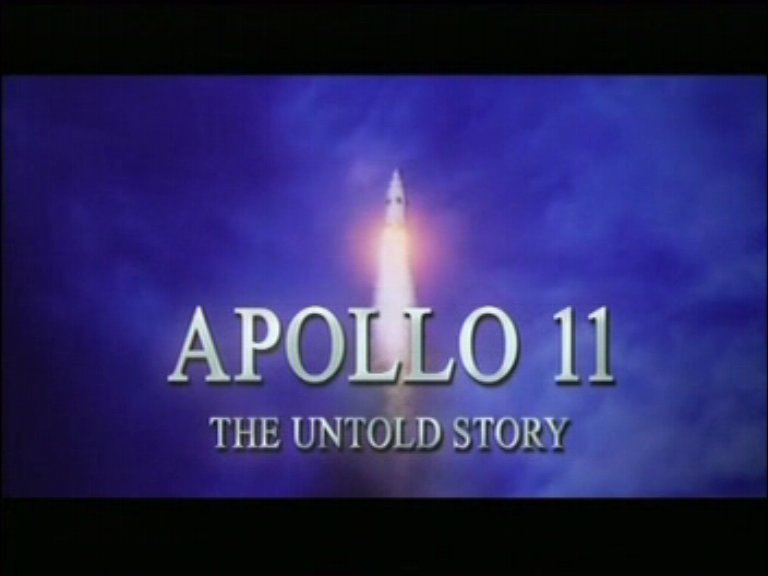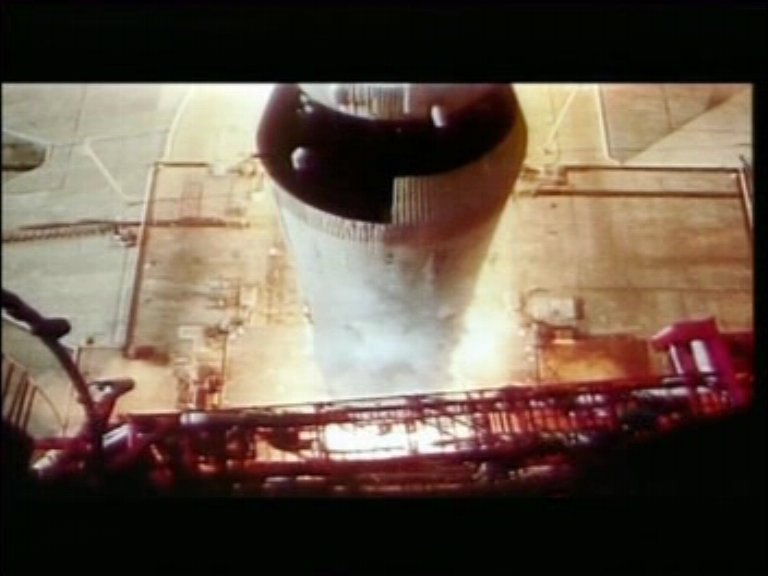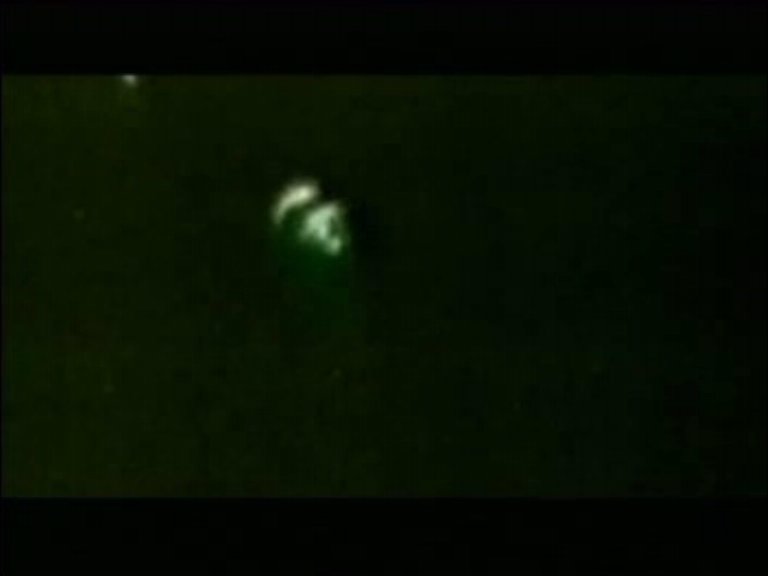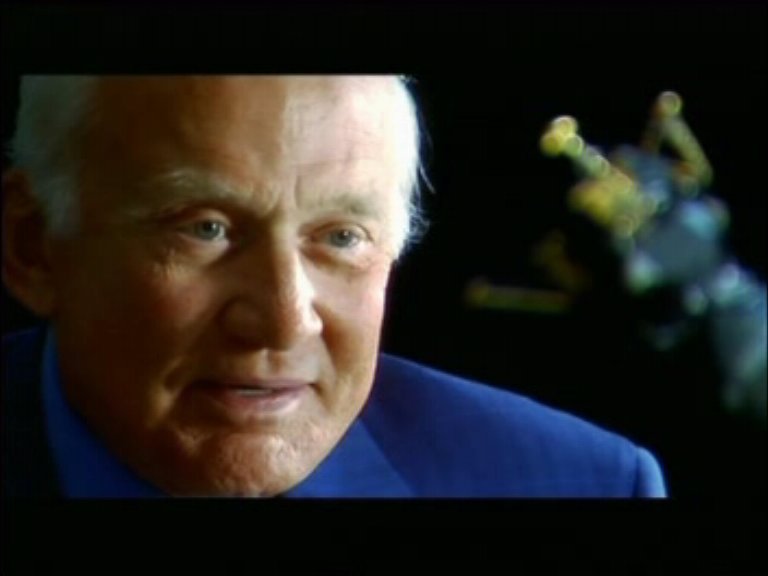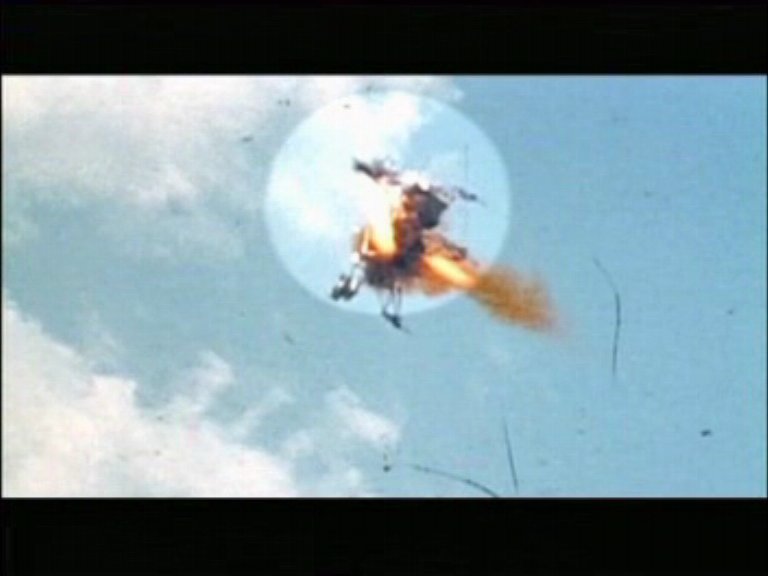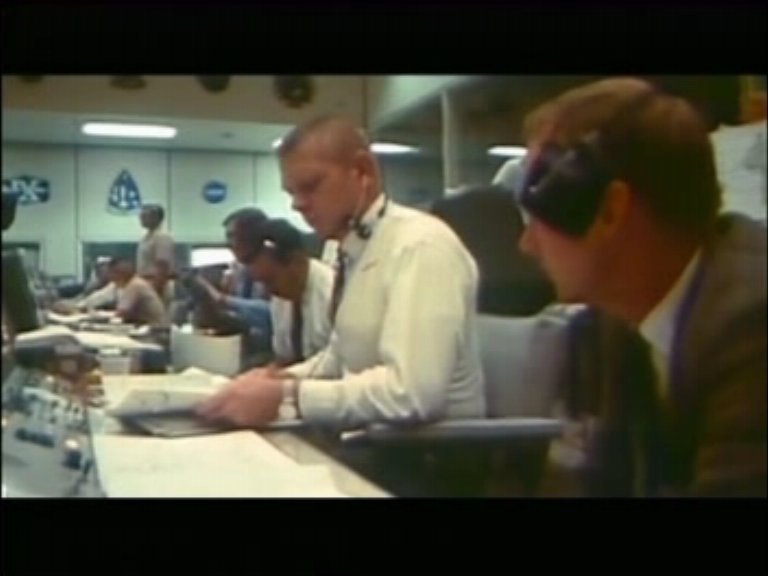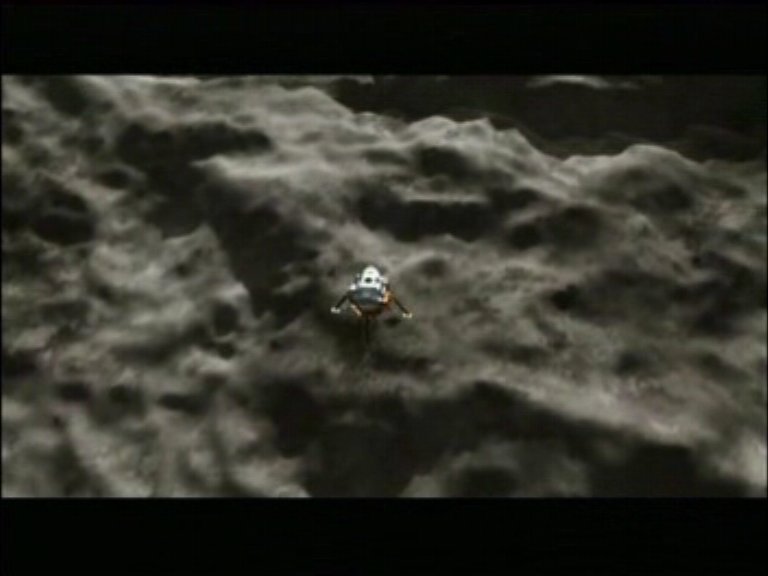|
Apollo 11: The Untold Story
The story of humanity’s first landing on the Moon is an oft-told tale of heroism, technological wizardry and a nation at the peak of its power. Of course, there is more to every story than you might think and the story of Apollo 11 is no different. On Monday, 24th July, 2006, thirty-seven years and four days after that historic touchdown, Channel 5 (UK) aired Apollo 11: The Untold Story. This documentary not only celebrated the astonishing achievements of NASA’s ground crews and astronauts, but also revealed that the mission almost ended in disaster, with some details released to the public for the very first time. This was the story told by those involved with the mission. Oh, and there was a UFO too, but more about that later… On July 16th, 1969, disaster almost struck from the start, only hours before blast-off. A fuel valve on the 364-ft (111m) Saturn V rocket developed a leak. Unaware of the danger, the astronauts, Neil Armstrong, Edwin ‘Buzz’ Aldrin and Michael Collins, continued their preparations for the mission. The countdown continued and NASA engineers managed to fix the leak with a ‘special monkey wrench’! The mission was given a go for launch and the astronauts waited patiently in their module as the seconds ticked down. Aldrin remarked that he felt they had a 99% chance of survival during launch. What he didn’t know at the time was that NASA had lied to them. They had been told that if one of the Saturn V’s engines failed to ignite, their module would be jettisoned and parachute to safety. The truth was that no such safety precautions had been implemented, as the technology did not exist to separate the module quickly enough in the event of a catastrophic incident with the 5.6 million pounds (2.5 million kg) of fuel. Thankfully, the sixth launch of a Saturn V went as planned (in all, there were thirteen launches of this type of rocket, all successful). The launch was controlled from the ground at Mission Control in Houston. We have all seen the rows of technical-looking consoles with monitors and flashing lights. This array of gizmos, though, is not as complex as you might first think. The flashing lights merely told the operators which switches in the spacecraft were being used. The computer screens were not computer screens, they were television screens with the data printed onto slides and then filmed and transmitted onto the screens. All this was controlled by the mainframe computers that filled an entire floor of the building. Jack Garman, one of Apollo 11’s computer engineers, explained that the entire computing power of the Houston mainframe was probably equal to a modern laptop. The computers aboard the spacecraft were, he said, between a digital watch and a cell phone, but probably closer to the watch. As Apollo 11 prepared to leave Earth orbit, it jettisoned the final stage of the Saturn V, the S-IVB, after a six minute burn to achieve Trans Lunar Injection (TLI). Man was on his way to the Moon. As they zipped through space, constant communication was maintained with Mission Control. The babble of chatter was so intense that to the untrained ear, it sounds like gibberish. Apollo 11 Flight Director, Gene Kranz, said that, with practice, you learn to listen for the important stuff. One communication, however, has become legendary in UFO folklore. For the first time, those who were present described what happened. This part of the story occurred as Apollo 11 neared the Moon, three days into their voyage. The astronauts saw something outside and asked Mission Control: “Do you have any idea where the S-IVB is with respect to us?” Aldrin explained that something was close enough to their ship to be observed and they had no idea what it was. Collins viewed the object through the telescope and reported that in one position, the UFO (for that is what it was, an Unidentified Flying Object) consisted of a series of ellipses, while in another position, it appeared L-shaped. Dr David Baker, a senior Apollo 11 scientist, told us very frankly that UFOs were not an uncommon sight by NASA astronauts. Several flights had reported unexplained objects both in Earth orbit and beyond. Aldrin remembered that they decided not to tell Mission Control that they had an unknown object travelling alongside them, because civilians on the ground would pick up the signal and ‘demand that the mission turn back because of aliens’! Instead they decided to cautiously ask the location of the S-IVB. The answer came back that it was six thousand nautical miles behind them. Obviously what they were looking at was not a part of their own launch vehicle! After watching the object for some time, the astronauts decided to go to sleep and not to discuss what they had seen until after the mission and they were debriefed on the ground. Dr Baker rounded off this segment by telling us that the possibility of encountering aliens on space missions had to be approached in a ‘very sensitive and positive and realistic way’. He said that there were a lot of people in the Apollo program that later became convinced that UFOs existed. That caused concern at NASA, who ordered that such things were not discussed publicly for fear of ridicule. The crew of Apollo 11 were in for another surprise. Aldrin began seeing flashes inside the module and feared that something had penetrated the skin of the spacecraft. He asked Armstrong if he had seen anything and the reply came that the commander had seen about a hundred of them. The crew only reported what they had seen on returning to Earth and the conclusion was that the flashes were caused by high-Z particles passing through the spacecraft and its crew. Z-particles are heavy cosmic particles that can cause damage to living nerve cells if exposed for a prolonged period of time. Even today, though, little is known about these mysterious effects from cosmic rays. The time came for the most dangerous part of the mission – the descent to the lunar surface. With the spacecraft orbiting 80 miles above the surface of the Moon, Armstrong and Aldrin entered the Lunar Module (LM). The skin of the LM was extremely thin, in places, as flimsy as two layers of aluminium foil. This design aided in reducing the overall weight of the module. It also meant that a sharp object in the wrong place could spell disaster and the end of the mission. There were other concerns with the LM, however, and the major one was with the engines. In testing, NASA used two prototypes to test landing the LM, the Lunar Landing Training Vehicle (LLTV) and the Lunar Landing Research Vehicle (LLRV). The LLRV was suspended by wires and had no engines and was completely safe, but the LLTV flew under its own power and was extremely unstable. Armstrong had almost lost his life flying the LLTV, ejecting to safety seconds before the craft flipped over and crashed to the ground. Paradoxically, it was this disaster that probably made Armstrong a shoe-in for the Mission Commander’s role on Apollo 11, due to his quick reactions in the accident. As soon as the LM appeared from behind the Moon, Mission Control began receiving telemetry, telling them that the module was on the wrong trajectory. Then all communications with the module failed. It came back online, but as Gene Kranz asked his ground staff for a ‘Go No-Go’ reading for the descent phase, communications went down again. Eventually, he decided to tell his teams that they should refer back to their last complete set of data and give him the ‘Go No-Go’ readings. The LM was given a Go for descent and it began its journey down to the lunar surface. The landing radar switched on, telling the astronauts and the computer how fast they were going and how far the ground was. Unfortunately, the on-board computer controlling the landing radar overloaded and failed. They had no idea how fast they were falling or how far above the surface they were. All they had on their display was the code ‘1202’. Jack Garman was the only technician at Mission Control who knew what this code meant. He had encountered it once before during a training exercise and had noted down the correct course of action to deal with it. He advised that if the alarm did not occur again, they could continue with the landing. Of course, it happened again! With the mission in danger of plunging into chaos, Armstrong decided to override the computer and switch to manual control. By this time, the LM was way off course and the surface was rushing up to meet them. To make matters worse, the descent engine’s fuel tanks were running low. As Armstrong controlled the throttle, he tried to locate a suitable landing spot. Back in Mission Control, the only thing that could be heard was a countdown of fuel remaining in seconds. At a hundred feet, a large, boulder-strewn crater loomed before the LM. Armstrong had to use more fuel to allow them to glide over the crater. Time was running out. In the simulations, it had been decided that if only thirty seconds of fuel remained, then the mission was aborted. This was not a simulation, though! Armstrong set the ‘Eagle’ Lunar Module down in the Sea of Tranquillity with only fifteen seconds of fuel remaining. The official order of business once on the surface was for the astronauts to sleep, but with adrenalin running high, Armstrong and Aldrin decided to immediately go outside. They donned their bulky spacesuits and tried to open the hatch. Unfortunately, it was stuck fast. The atmospheric pressure inside the LM was still too high to allow the hatch to open. Aldrin explained that when they equalise the pressures, not all of the internal atmosphere is vented. Aldrin was forced the slightly bend the hatch to allow it to open! What happened next is perhaps the single most historic event in human history. Armstrong descended the ladder, stepped onto the surface of the Moon and uttered the immortal words: “This is one small step for… man. One giant leap for mankind.” Aldrin followed him a few minutes later and their mission continued. As Armstrong set about collecting Moon rocks and dust samples, set up seismic monitors and other tasks, Aldrin was seen skipping and running about aimlessly, having a great time. It turned out he was experimenting with lunar locomotion. He found that the best way to get around was to ‘bunny hop’. Aldrin’s gallivanting was interrupted by the most famous long-distance call in history. President Richard Nixon called them from the Oval Office of the White House, congratulating them for their staggering achievement. Unknown to the two astronauts, however, was that the politicians in Washington DC had drafted a speech for Nixon in the event that they never returned to Earth. They may have landed on the Moon, but danger and disaster still loomed. The ascent engine of the LM had caused problems all through testing. It had only worked fifty percent of the time, so Armstrong and Aldrin only had a one-in-two chance of ever leaving the lunar surface! Things got worse when the men returned to the module. After removing their suits, Aldrin noticed something on the floor that should not have been there. It was the circuit breaker switch that controlled the firing of the ascent engine! Of all the things that could break, what were the odds of that particular switch snapping? Aldrin still treasures the object that saved their lives – a plastic pen. He jammed the writing implement into the circuit breaker and hoped for the best. Armstrong fired the ascent engine and, thankfully, they rocketed into the sky, leaving the lower section of the LM far below. After redocking with the orbiting Command Module, the crew began their three-day journey home. As they module entered the Earth’s atmosphere, the intense fireball that surrounded it caused a four-minute communications blackout (this is quite normal). Then the parachutes opened. Aldrin made a curious statement then: “At somewhere, I guess, below ten thousand feet, we could smell salt air. That was quite a ‘welcome home’ sensation.” They could smell salt air? They were in a sealed spacecraft weren’t they? Anyway, they splashed down in the Pacific Ocean and the mission had been a resounding success. NASA felt invincible. They had achieved the impossible. With thirty years of hindsight, many of the Apollo team members feel, though, that they were extremely lucky to have accomplished their goals without losing a mission. Harold Loden, Apollo 11 Mission Controller, said that if they were to approach somebody today and propose that they execute their missions in the same way, they would be laughed at and told that there were not enough safety precautions in place. David Baker agrees and suggests that if they had continued the Apollo missions after Apollo 17, lives would definitely have been lost. Aldrin, on the other hand, puts down the successes of the Apollo Project to the bold decisions they made and the dedicated people behind the astronauts. Apollo 11: The Untold Story was a terrific programme that showed how close to disaster that first landing on the Moon came. What fascinates us at UFOData, though, is the frankness with which the encounter with an unidentified object was described. There was not a hint of levity in the descriptions given and Aldrin told it like it was – an object that sometimes appeared to be made up of ellipses and sometimes appeared L-shaped. What the heck was it? It was not their own S-IVB booster, as that was far, far behind them. Could it have been an S-IVB from Apollo 10, which orbited the Moon, but didn’t land? Or perhaps it really was an alien spacecraft watching as mankind took its first steps off-planet! Who knows? The images used are the property of the copyright holders and are only used here for review purposes. © Steve Johnson - 2006 |
